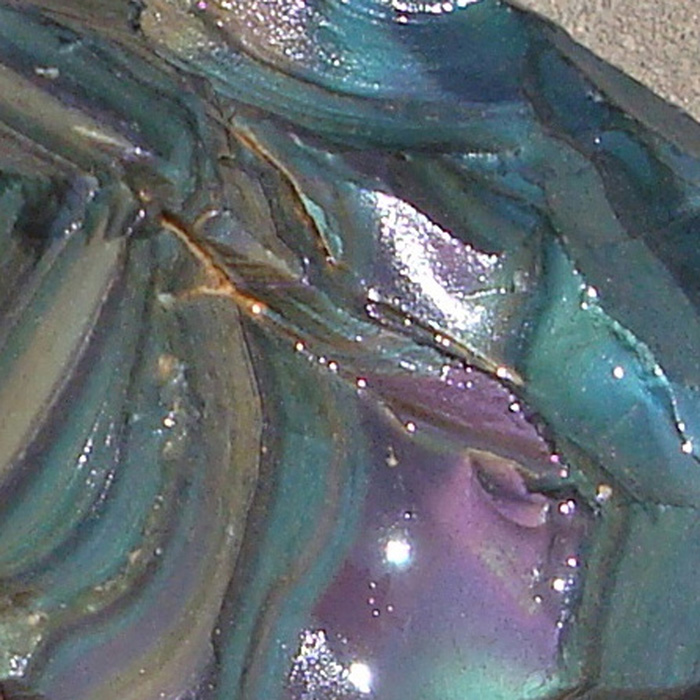Scientific Name: Volcanic glass
Group: Volcanic igneous rock
Chemical composition: Silica
Colors: Rainbow-sheen black.
Hardness: 5
Formation: Anhedral crystals
Principal Sources: Worldwide
Special Notes: Obsidian is produced when felsic lava extruded from a volcano cools rapidly with minimum crystal growth. Because of this lack of crystal structure, obsidian blade edges can reach almost molecular thinness, leading to its ancient use as projectile points and blades, and its modern use as surgical scalpel blades. Obsidian has been used in cardiac surgery; blades have a smooth cutting edge many times sharper than high-quality surgical steel. Obsidian is mineral-like, but not a true mineral because as a glass it is not crystalline; in addition, its composition is too complex to comprise a single mineral. It is sometimes classified as a mineraloid. Obsidian may contain patterns of gas bubbles remaining from the lava flow, aligned along layers created as the molten rock was flowing before being cooled. These bubbles can produce interesting effects such as a golden sheen (sheen obsidian) or an iridescent, rainbow-like sheen (rainbow obsidian).

